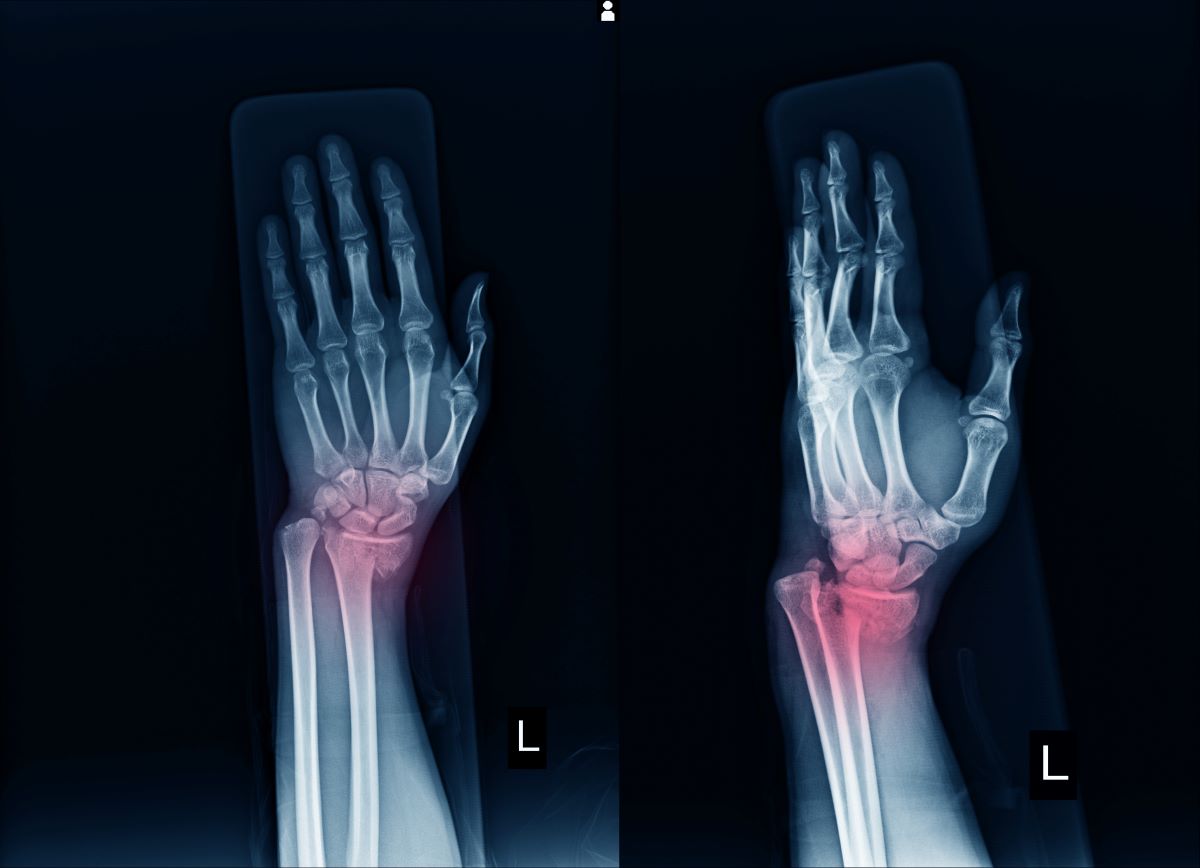Broken Wrist: Symptoms, Causes, Treatment
What are the symptoms of a broken wrist?
A broken wrist, also known as a wrist fracture, can cause a variety of symptoms, depending on the location and severity of the fracture. Common symptoms of a broken wrist may include:
- Pain: Pain in the wrist, which may be severe, especially with movement or pressure on the wrist.
- Swelling: Swelling around the wrist, which may develop rapidly after the injury.
- Bruising: Bruising around the wrist, which may appear soon after the injury or develop over time.
- Deformity: A visibly deformed or crooked appearance of the wrist, especially if the fracture has caused the bones to move out of alignment.
- Tenderness: Tenderness to the touch around the wrist, especially over the site of the fracture.
- Stiffness: Difficulty moving the wrist or decreased range of motion, especially if the fracture causes instability in the joint.
- Numbness or Tingling: Numbness, tingling, or a pins-and-needles sensation in the hand or fingers, which may indicate nerve damage associated with the fracture.
It’s important to note that these symptoms can also occur with other injuries or conditions affecting the wrist, such as sprains or strains. If you suspect you have a broken wrist, it’s important to seek medical attention promptly for an accurate diagnosis and appropriate treatment.
What are the causes of a broken wrist?
A broken wrist, or wrist fracture, can occur as a result of various injuries or traumas. Some common causes of a broken wrist include:
- Falls: Falling onto an outstretched hand is one of the most common causes of a broken wrist. The impact of the fall can cause enough force to fracture one or more of the bones in the wrist.
- Sports Injuries: Participation in sports and recreational activities that involve high impact or contact, such as football, basketball, skiing, or skateboarding, can increase the risk of wrist fractures.
- Motor Vehicle Accidents: Trauma from a car accident or other motor vehicle collision can cause wrist fractures, especially if the hands are used to brace against the impact.
- Direct Blows: A direct blow to the wrist, such as from a fall, a sports injury, or a physical altercation, can cause enough force to fracture the bones.
- Osteoporosis: Weakening of the bones due to osteoporosis can increase the risk of fractures, including wrist fractures. In people with osteoporosis, even a minor fall or injury can lead to a fracture.
- Repetitive Stress: Overuse or repetitive stress on the wrist, such as in activities that involve repetitive wrist motion or heavy lifting, can increase the risk of stress fractures in the wrist bones.
- Pathological Conditions: Certain medical conditions, such as bone tumors or metabolic disorders, can weaken the bones and increase the risk of fractures, including wrist fractures.
It’s important to seek medical attention if you suspect you have a broken wrist, as prompt diagnosis and treatment can help prevent complications and promote proper healing. Treatment for a broken wrist may include immobilization with a cast or splint, medication for pain and inflammation, physical therapy, or, in severe cases, surgery to realign the bones.
What is the treatment for a broken wrist?
The treatment for a broken wrist, or wrist fracture, depends on the location and severity of the fracture. In general, treatment aims to realign the broken bones, relieve pain, and promote healing. Treatment options may include:
- Immobilization: For stable fractures where the bones are not out of place, a splint or cast may be used to immobilize the wrist and allow the bones to heal. The cast or splint is usually worn for several weeks.
- Reduction: If the bones are out of place (displaced), a healthcare provider may need to manipulate the bones back into alignment. This procedure is called a closed reduction and is usually done under local anesthesia.
- Surgery: In some cases, surgery may be necessary to realign the bones and stabilize the fracture. Surgery may involve the use of pins, screws, plates, or wires to hold the bones in place. Surgery may be recommended for complex fractures, fractures that do not heal properly with other treatments, or fractures that are causing pressure on nearby nerves or blood vessels.
- Medication: Pain relievers, such as acetaminophen or nonsteroidal anti-inflammatory drugs (NSAIDs), may be used to manage pain and reduce inflammation.
- Physical Therapy: After the initial healing period, physical therapy may be recommended to help restore strength, flexibility, and range of motion in the wrist.
- Follow-Up Care: Regular follow-up visits with a healthcare provider are important to monitor the healing process and make any necessary adjustments to the treatment plan.
It’s important to follow your healthcare provider’s recommendations for treatment and rehabilitation to ensure proper healing of the wrist. Failure to properly treat a broken wrist can lead to long-term complications, such as chronic pain, stiffness, and decreased range of motion. If you suspect you have a broken wrist, seek medical attention promptly for an accurate diagnosis and appropriate treatment.




